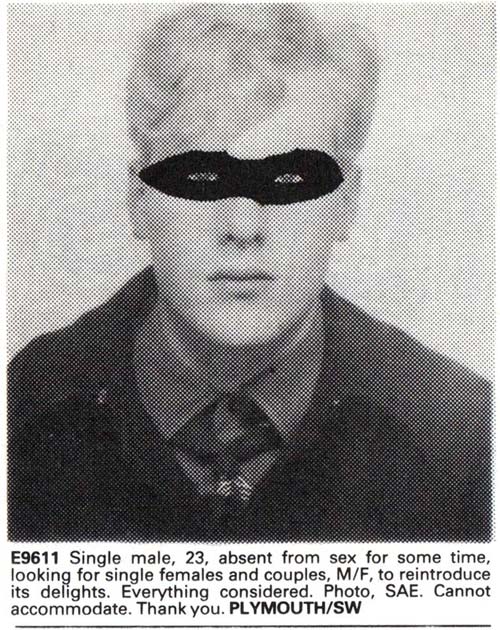Which is why trumpers are mixed up in duels and here’s B


{ Colonel Rosa Klebb, a high ranking member of the feared Russian counter-intelligence agency SMERSH, and main antagonist from the James Bond film and novel From Russia with Love | Wikipedia | more }
Ben Bernanke has not only refused to abandon his idee fixe of an “inflation target”, a key cause of the global central banking catastrophe of the last twenty years (because it can and did allow asset booms to run amok, and let credit levels reach dangerous extremes).
Worse still, he seems determined to print trillions of emergency stimulus without commensurate emergency justification to test his Princeton theories, which by the way are as old as the hills. Keynes ridiculed the “tyranny of the general price level” in the early 1930s, and quite rightly so. Bernanke is reviving a doctrine that was already shown to be bunk eighty years ago.
{ Telegraph | Continue reading }
Structural unemployment is a fake problem, which mainly serves as an excuse for not pursuing real solutions.
Who are these wise heads I’m talking about? The most widely quoted figure is Narayana Kocherlakota, the president of the Federal Reserve Bank of Minneapolis, who has attracted a lot of attention by insisting that dealing with high unemployment isn’t a Fed responsibility: “Firms have jobs, but can’t find appropriate workers. The workers want to work, but can’t find appropriate jobs,” he asserts, concluding that “It is hard to see how the Fed can do much to cure this problem.”
Now, the Minneapolis Fed is known for its conservative outlook, and claims that unemployment is mainly structural do tend to come from the right of the political spectrum. But some people on the other side of the aisle say similar things. For example, former President Bill Clinton recently told an interviewer that unemployment remained high because “people don’t have the job skills for the jobs that are open.”
Well, I’d respectfully suggest that Mr. Clinton talk to researchers at the Roosevelt Institute and the Economic Policy Institute, both of which have recently released important reports completely debunking claims of a surge in structural unemployment.
After all, what should we be seeing if statements like those of Mr. Kocherlakota or Mr. Clinton were true? The answer is, there should be significant labor shortages somewhere in America — major industries that are trying to expand but are having trouble hiring, major classes of workers who find their skills in great demand, major parts of the country with low unemployment even as the rest of the nation suffers.
None of these things exist. Job openings have plunged in every major sector, while the number of workers forced into part-time employment in almost all industries has soared. Unemployment has surged in every major occupational category. Only three states, with a combined population not much larger than that of Brooklyn, have unemployment rates below 5 percent.
Oh, and where are these firms that “can’t find appropriate workers”? The National Federation of Independent Business has been surveying small businesses for many years, asking them to name their most important problem; the percentage citing problems with labor quality is now at an all-time low, reflecting the reality that these days even highly skilled workers are desperate for employment.
So all the evidence contradicts the claim that we’re mainly suffering from structural unemployment. Why, then, has this claim become so popular?
Part of the answer is that this is what always happens during periods of high unemployment — in part because pundits and analysts believe that declaring the problem deeply rooted, with no easy answers, makes them sound serious.

The performer-writer Ann Liv Young belongs to the movement in the arts that was labeled Sensation in the 1990s. She performed “Snow White” naked, apart from a Disney mask on her face, while heavily pregnant. Dildos and masturbation have been part of her theatrical fare. At MoMA P.S. 1 in February she insulted a fellow artist’s work (accompanied by urination and masturbation) until management turned the lights off on her. And on Friday and Saturday she performed a one-woman “Cinderella” at the Issue Project Room in Gowanus, Brooklyn. In this, she converses with members of the audience and also urinates and defecates onstage. (…)
Waiting 10 minutes for someone to defecate onstage is boring.
unrelated { Upcoming free museum days in NYC }
illustration { Mathias Schweizer’s Malamerde }
A Michigan company announced that for the low, low price of $1.99, you could have a lifetime license to use something you might not have thought you needed - a new punctuation mark.
It’s called the SarcMark, and it looks like a reversed “at” sign.
Beyond the practical experiences and impressions being held for ages from ancient times, the scientific observations and surveys indicate that psychopathological symptoms, especially those belonging to the bipolar mood disorder (bipolar I and II), major depression and cyclothymia categories occur more frequently among writers, poets, visual artists and composers, compared to the rates in the general population. Self-reports of writers and artists describe symptoms in their intensively creative periods which are reminiscent and characteristic of hypomanic states. Further, cognitive styles of hypomania (e.g. overinclusive thinking, richness of associations) and originality-prone creativity share many common as indicated by several authors.
Among the eminent artists showing most probably manic-depressive or cyclothymic symptoms were: E. Dickinson, E. Hemingway, N. Gogol, A. Strindberg, V. Woolf, Lord Byron (G. Gordon), J. W. Goethe, V. van Gogh, F. Goya, G. Donizetti, G. F. Händel, O. Klemperer, G. Mahler, R. Schumann, and H. Wolf. Based on biographies and other studies, brief descriptions are given in the present article on the personality character of Gogol; Strindberg, Van Gogh, Händel, Klemperer, Mahler, and Schumann.
Further example is the enigmatic silence and withdrawal from opera composing of Gioacchino Rossini (1792-1868), which is still a matter of various theories and explanations. Until his life of 37 years he composed 39 operas and lived almost another 40 years without composing any new one. Biographies show that severe depressive sufferings played a role in that withdrawal and silence, while in his juvenile years most probably hypomanic personality traits contributed to the extreme achievements and very fast composing techniques. Analysing the available biographies of Rossini and the character of music he composed (e.g. opera buffa, Rossini crescendo) strongly suggests the medical diagnosis of a bipolar affective illness.
Comparing to the general population, bipolar mood disorder is highly overrepresented among writers and artists. The cognitive and other psychological features of artistic creativity resemble many aspects of the hypomanic symptomatology. It may be concluded that bipolar mood traits might contribute to highly creative achievements in the field of art. At the same time, considering the risks, the need of an increased medical care is required.
Reverse-engineering the human brain so we can simulate it using computers may be just two decades away, says Ray Kurzweil, artificial intelligence expert and author of the best-selling book The Singularity is Near.
It would be the first step toward creating machines that are more powerful than the human brain. These supercomputers could be networked into a cloud computing architecture to amplify their processing capabilities. Meanwhile, algorithms that power them could get more intelligent. Together these could create the ultimate machine that can help us handle the challenges of the future, says Kurzweil.
related { The Man Who Made a Copy of Himself. A Japanese roboticist is building androids to understand humans–starting with himself. | ieee Spectrum | full story }

Kent Kiehl has studied hundreds of psychopaths. Kiehl is one of the world’s leading investigators of psychopathy and a professor at the University of New Mexico. He says he can often see it in their eyes: There’s an intensity in their stare, as if they’re trying to pick up signals on how to respond. But the eyes are not an element of psychopathy, just a clue.
Officially, Kiehl scores their pathology on the Hare Psychopathy Checklist, which measures traits such as the inability to feel empathy or remorse, pathological lying, or impulsivity.
“The scores range from zero to 40,” Kiehl explains in his sunny office overlooking a golf course. “The average person in the community, a male, will score about 4 or 5. Your average inmate will score about 22. An individual with psychopathy is typically described as 30 or above. Brian scored 38.5 basically. He was in the 99th percentile.”
“Brian” is Brian Dugan, a man who is serving two life sentences for rape and murder in Chicago. (…)
Dugan is smart — his IQ is over 140 — but he admits he has always had shallow emotions. He tells Kiehl that in his quarter century in prison, he believes he’s developed a sense of remorse.
“And I have empathy, too — but it’s like it just stops,” he says. “I mean, I start to feel, but something just blocks it. I don’t know what it is.”
Kiehl says he’s heard all this before: All psychopaths claim they feel terrible about their crimes for the benefit of the parole board.
“But then you ask them, ‘What do you mean, you feel really bad?’ And Brian will look at you and go, ‘What do you mean, what does it mean?’ They look at you like, ‘Can you give me some help? A hint? Can I call a friend?’ They have no way of really getting at that at all,” Kiehl says.
Kiehl says the reason people like Dugan cannot access their emotions is that their physical brains are different. And he believes he has the brain scans to prove it.
image { Richard Boulet }

{ Over the weekend, 9/11 memorials were held across the nation. In New York, one such memorial was held at City Hall Park. Organized by inventors Steven Brandstetter and James Devlin of J&S Gaming, the event featured the pair’s Lottery Ball Characters which were turned into life sized costumes to represent the likeness of a police officer and a fireman. | adrants via copyranter }

The grammar of Interlingua is an international auxiliary language first publicized by IALA. It follows the usage of the original grammar text (Gode & Blair, 1951), which is accepted today but regarded as conservative.
The grammar of Interlingua is based largely on that of the Romance languages, but simplified, primarily under the influence of English. However, all of the control languages, including German and Russian, were consulted in developing the grammar. Grammatical features absent from any of the control languages were dropped. For example, there is neither adjectival agreement (Spanish/Portuguese gatos negros ‘black cats’), since this feature is absent in English, nor continuous verb tenses (English I am reading), since they are absent in French.
There is no systemic marking for parts of speech. For example, nouns do not have to end in any particular letter. Typically, however, adjectives end in -e or a consonant, adverbs end in -mente or -o, while nouns end in -a, -e, -o or a consonant. Finite verbs virtually always end in -a, -e, or -i, while infinitives add -r: scribe, ‘write’, ‘writes’; scriber, ‘to write’.
{ unsourced image }

When police in Western New York pulled over Gary Korkuc for blowing off a stop sign on Sunday, they found a live cat in his trunk, covered in cooking oil, peppers, and salt. Korkuc told authorities that his pet feline was “possessive, greedy, and wasteful” and that he intended to cook and eat it. Korkuc has been charged with animal cruelty. Is there a legal way to cook and eat a cat?


{ Imp Kerr & Associates, NYC }
The Oswego man charged with fatally shooting his wife and their three school-age children told police he was having marital problems caused by his affair in Mexico seven months earlier and his wife’s lack of interest in adopting his Druid beliefs.
{ Chicago Breaking News | Continue reading }
A controversial alternative health guru is suing after a taste of his own medicine nearly killed him.
Gary Null - described on quackwatch.org as “one of the nation’s leading promoters of dubious treatment for serious disease” - claims the manufacturer of Gary Null’s Ultimate Power Meal overloaded the supplements with Vitamin D.
The buff “Joy of Juicing” author, whose products include Red Stuff Powder and Gary Null’s Heavenly Hair Cleaner, claims he suffered kidney damage and was left bloodied and in intense pain from two daily servings of the supplement.
{ NY Daily News | Continue reading }
A Newport Beach man attempting to steal a pornographic magazine shoved a liquor store owner so fiercely that the man flew through the air and landed on the back of his head.
The owner died the day after the vicious attack on July 28, 2007 from a fractured skull and massive bleeding in the brain.
related { Man killed in bizarre high speed crash. }
“The government has been telling us the truth,” declared David Clarke, a senior lecturer in journalism at Sheffield Hallam University, who has a side interest in U.F.O.’s. “There are a lot of weird things in the sky, and some of them we can’t explain, but there’s not a shred of evidence for a single alien visitation.”
Which is, frankly, a letdown, as is the government’s prosaic explanation of why, for decades, it has meticulously documented reports of U.F.O. sightings. (…)
In the old days, the United States systematically compiled reports of U.F.O. sightings, too. But its last program, known as Project Blue Book, was closed down in 1969 after government officials concluded that if something was out there, it was not anything they wanted to investigate.
previously/related { Now, just where might this Great Filter be located? }